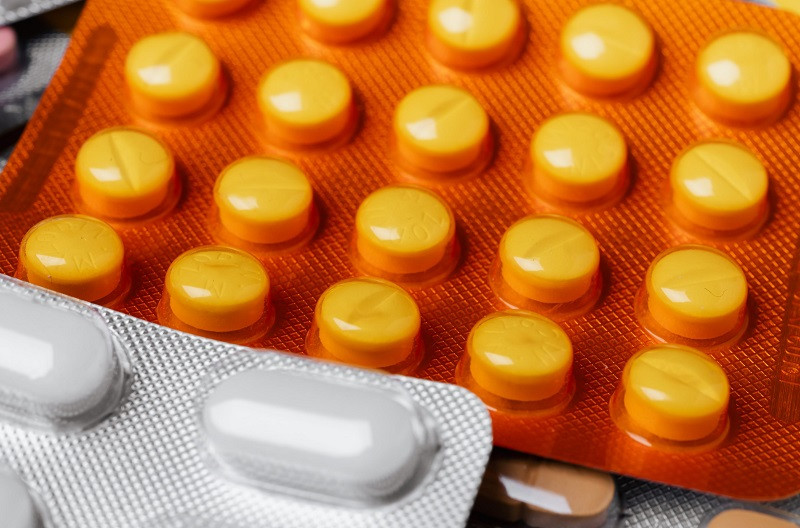Amphetamine psychosis arouses interest and concern in equal measure. It is a possible side effect derived from the consumption of certain illegal drugs or certain medications, which can completely alter the life and functioning of the person who suffers from it.
Several important unknowns unfold around it to understand its nature. How does it manifest? How long do its effects last? Is it similar to other types of psychosis? Do you have treatment? In this article we explain it to you.
What is amphetamine psychosis?
Psychosis is the name given to a type of mental dysfunction that causes a break with reality in the mind of the affected person. That is, the person is not able to distinguish what only happens in their head from what happens in the real world. The awareness of illness or insight is usually absent, which is why people who suffer from it also tend to suffer deep states of anguish due to not knowing what is happening.
Psychosis is typical of serious mental illnesses, such as schizophrenia or bipolar disorder, and the most characteristic and common symptoms are delusions and hallucinations. However, When we talk about amphetamine psychosis, we are referring to that which appears in an apparently healthy person, after the consumption of amphetamines.
Some studies place the prevalence figures of amphetamine psychosis between 15 and 23% when it is associated with recreational use, and 60% when we talk about dependent people who have been using amphetamines for long periods of time.
Risk factor’s
Although the cause of the aforementioned individual differences is unknown, yes Some risk factors have been identified for developing amphetamine psychosis. :
The most plausible hypothesis so far is based on the vulnerability-stress paradigm, stating that certain people would be more vulnerable to suffering from psychosis and drug use (stressor) would trigger its appearance.
Symptoms
Delusions are confusing thoughts of a paranoid, persecutory or self-referential type (the person believes that certain stimuli or impersonal messages refer to them, for example a message launched in a television advertisement), among others. These thoughts are very difficult to modify and even if they are confronted with evidence that what they think is not real, they do not usually disappear.
hallucinations are perceptual alterations in which the person you see, hear, smell or feel stimuli that are not really present. The most common are auditory or visual, but they can also be tactile, olfactory or kinesthetic (related to bodily sensations).
Duration of its effects
The evidence that exists to date suggests that The symptoms of amphetamine psychosis can evolve in different ways depending on the person affected. , although the reasons that mark the differences are unknown. From people who, despite consuming large doses, never suffer from it, to people who suffer a psychotic episode and subsequently recover, to people who never manage to recover and live with psychotic episodes chronically.
Treatment
Treatment for amphetamine psychosis, like other psychoses, is based on antipsychotic drugs.
It is a treatment aimed at reducing symptoms Well, at the moment, there is no definitive cure for chronic cases.
Differences and similarities between amphetamine psychosis and primary psychosis
Are a primary psychosis (one that does not derive from another condition) and an amphetamine psychosis completely the same? The truth is that they seem to manifest themselves somewhat differently.
In primary psychoses, for example that suffered by a person with schizophrenia, positive symptoms and negative symptoms may occur.
We call positive symptoms all those alterations that the person suffers and that should not be there (delusions or hallucinations are positive symptoms). On the other hand, negative symptoms are those functions that the person should be able to perform normally but cannot carry out or has difficulty doing so (absence of speech, absence of movement, emotional dullness…).
Amphetamine psychosis seems to present mainly with positive symptoms the most common being:
In these cases, negative symptoms are much less frequent. Additionally, Patients suffering from amphetamine psychosis tend to recover more quickly than those suffering from primary psychosis.

- You may be interested: “What is psychosis? Causes, symptoms and treatment”
Cause of amphetamine psychosis: amphetamines
Amphetamines are a type of chemical substance that generates stimulating effects in the body and which has been used, both legally and illegally, since the 1920s. Some of its most common effects are:
- Decreased fatigue
- Euphoria
- Sense of well-being
- Sensory alterations
- Loquacity
- Incrise of cardiac frecuency
- Decreased fear
As it is a substance that activates our central nervous system, all the effects derived from its hyperactivation are to be expected, both in a purely physiological way, such as hypertension, and with subjective sensations derived from cognitive, perceptual and emotional alterations.
As with other drugs, Its addictive effects are due to the activation of dopamine, responsible for our sensations of pleasure. The consumption of the substance becomes a pleasurable behavior that we are willing to repeat whenever it is available.
Your historical journey
It is a drug with a quite controversial history, since At the beginning of its appearance on the pharmacological market, it began to be used without too many precautions for multiple therapeutic purposes. and it only generated some concern when the side effects it could cause began to be seen, including amphetamine psychosis. During their therapeutic boom, amphetamines were used to treat almost anything: epilepsy, asthma, head trauma, sexual dysfunctions, depression, obesity, multiple sclerosis…
Even during World War II it was administered to armies for various purposes. To the soldiers of the troops so that they felt more euphoric and less tired and fearful, to the workers of the war industry so that they performed more and, finally, to the suicide pilots who crashed their planes against enemy ships.
But why did amphetamines become the solution for everything? Mainly due to the type of effects it causes in the body, which can be very varied. It is a chemical substance whose structure is very similar to that of some of the neurotransmitters that our brain secretes, which is why it has the ability to activate various brain areas. Its mechanism of action involves dopamine, serotonin, adrenaline and norepinephrine, being extremely complex. So much so, that research is still being carried out to better understand its neurobiological effects.
Despite the side effects, which contributed to its depopularization, amphetamine continues to be used today under different trade names to treat some diseases or syndromes. Pharmaceutical companies have focused their efforts on finding substances that minimize the adverse and hallucinogenic effects, while increasing the beneficial ones. Even so, no substance has yet been found that does not have side effects, which is why its use continues to generate controversy. Currently, it is commonly used in the treatment of attention deficit, obesity or narcolepsy (sleep disorder that generates sudden sleep attacks and chronic fatigue).
Side effects
At the same time that amphetamines were becoming popular in doctors’ offices, they also became popular at more alternative parties. It quickly became one of the most popular drugs of abuse among young people. and it caught the attention of health authorities in several countries, who began to question its use even if it was legal and under medical prescription.
Some of the side effects that this class of psychoactive substances can cause are:
- Increased body temperature
- Tremors
- Bruxism (teeth and jaw clenching)
- Insomnia
- Urinary retention
- Headaches
- Hormonal alterations
- Feeling of distress or panic
- Irritability
- Disorientation
- strange thoughts
In addition to these, among the most serious effects we would find cardiac arrhythmias, cardiovascular collapse, liver toxicity, kidney failure or amphetamine psychosis.
It has also been described that, after consumption, There are certain effects similar to those of a hangover that last a few days after. These effects may include:
- Fatigue
- Apathy
- Insomnia
- Memory leaks
- Lack of sexual desire
- Depression
- Irritability
- Muscle pains
Recreational and illegal use of amphetamines
In their recreational use, amphetamines can be found in different compositions and under different names.
Pure amphetamine is commonly known as speed. Dextroamphetamine (a drug used to treat the symptoms of attention deficit disorder and used illegally) may be known by the name dexies either kiddie-speed. Finally, methamphetamine when consumed in solid form is called crystal and, in its liquid form, red speed.
Other illegal uses that have been given to this drug, outside of parties, have been sports doping and consumption by workers or students who want to improve their cognitive performance.
Different formats and their effects
Amphetamine can be found in various formats: pills, powder, crystals or as a liquid. Depending on its format, it can be consumed swallowed, inhaled, injected, smoked or rubbed on mucous membranes such as the gums.
Depending on the consumption format, we will obtain effects of a certain intensity that will appear more or less quickly. In that sense, the most intense and rapid effects are achieved by injection or smoking, however they disappear shortly after consumption. When inhaled the effects are less intense, lasting between 15 and 30 minutes. Finally, when taken orally the effects take longer to appear but are the longest lasting.
Drug use and associated psychological problems
Other types of psychological problems have also been associated with amphetamine use, such as cognitive dysfunctions (memory and executive functions problems) or anxiety-depressive symptoms. Likewise, other types of drugs, such as cannabis, have been associated with the appearance of similar symptoms, including psychosis.
As we see, the consumption of these substances can have multiple effects on our body with short, medium and long-term consequences, so it is not advisable to trivialize their use, whether for therapeutic or recreational purposes.









